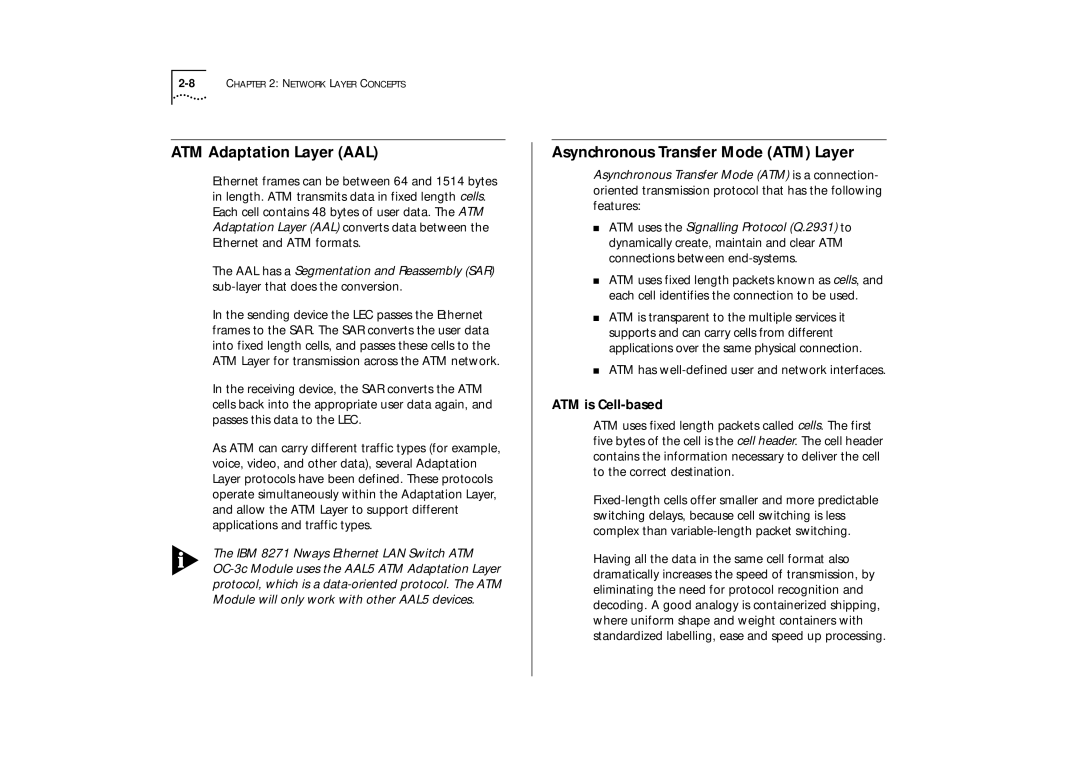
ATM Adaptation Layer (AAL)
Ethernet frames can be between 64 and 1514 bytes in length. ATM transmits data in fixed length cells. Each cell contains 48 bytes of user data. The ATM Adaptation Layer (AAL) converts data between the Ethernet and ATM formats.
The AAL has a Segmentation and Reassembly (SAR)
In the sending device the LEC passes the Ethernet frames to the SAR. The SAR converts the user data into fixed length cells, and passes these cells to the ATM Layer for transmission across the ATM network.
In the receiving device, the SAR converts the ATM cells back into the appropriate user data again, and passes this data to the LEC.
As ATM can carry different traffic types (for example, voice, video, and other data), several Adaptation Layer protocols have been defined. These protocols operate simultaneously within the Adaptation Layer, and allow the ATM Layer to support different applications and traffic types.
The IBM 8271 Nways Ethernet LAN Switch ATM
Asynchronous Transfer Mode (ATM) Layer
Asynchronous Transfer Mode (ATM) is a connection- oriented transmission protocol that has the following features:
■ATM uses the Signalling Protocol (Q.2931) to dynamically create, maintain and clear ATM connections between
■ATM uses fixed length packets known as cells, and each cell identifies the connection to be used.
■ATM is transparent to the multiple services it supports and can carry cells from different applications over the same physical connection.
■ATM has
ATM is Cell-based
ATM uses fixed length packets called cells. The first five bytes of the cell is the cell header. The cell header contains the information necessary to deliver the cell to the correct destination.
Having all the data in the same cell format also dramatically increases the speed of transmission, by eliminating the need for protocol recognition and decoding. A good analogy is containerized shipping, where uniform shape and weight containers with standardized labelling, ease and speed up processing.
